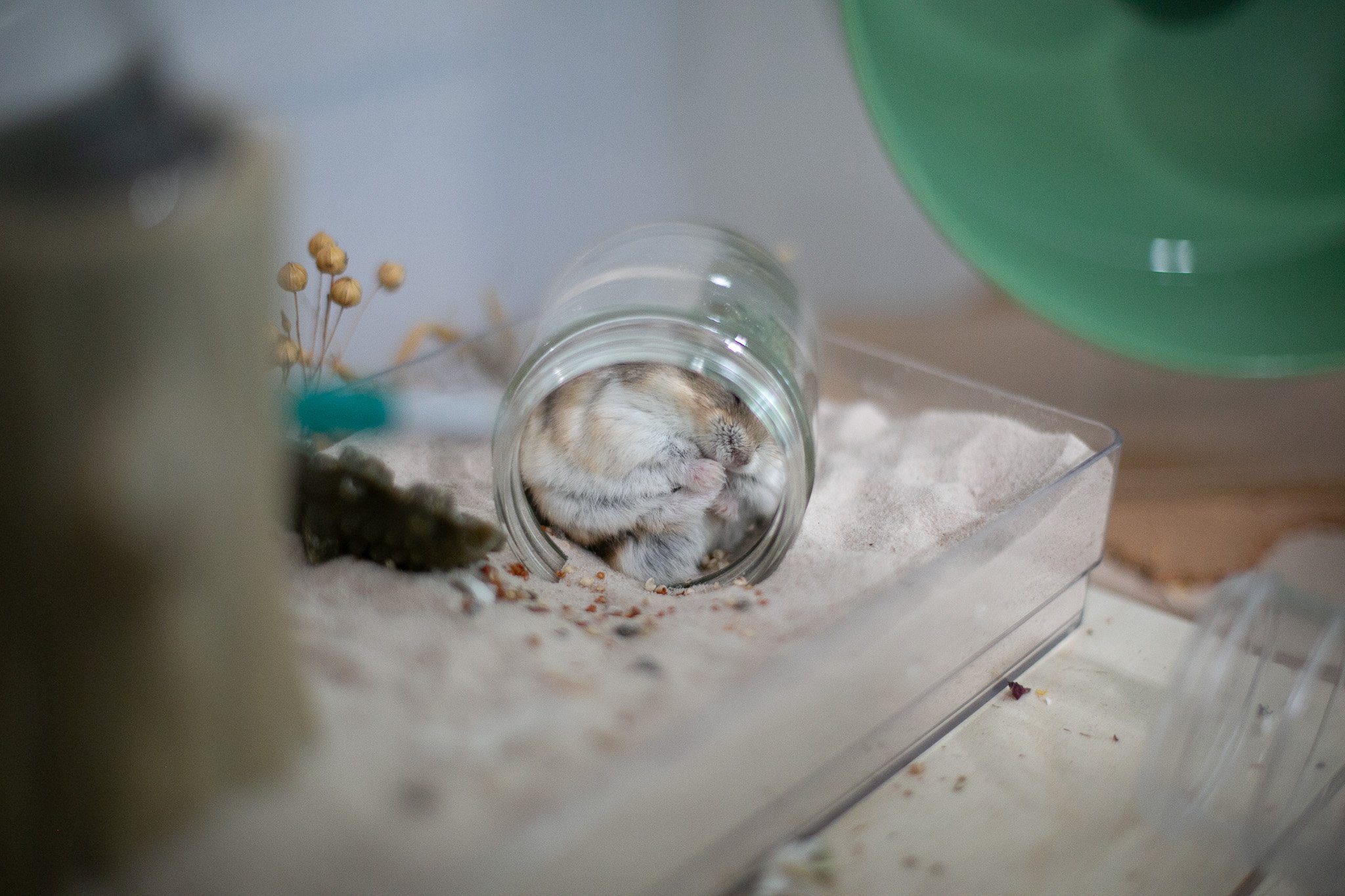
HOW TO DO YOUR
hamster cleANING
Spot Cleaning & Weekly Upkeep
Hamsters, like dogs, are very scent oriented animals. For this reason, it is recommended that you do not do a full cage clean unless there is a reason to do so (like a medical issue, mites, etc). This may be a surprise to many since the general rule of thumb in the past (before we knew much about hamsters!) was to do weekly cage cleans.
Instead, many hamster owners do frequent “spot cleans” - every few days or so (or as needed, depending on your hamster) you can tidy up their area. This can involve cleaning any areas where they urinate (like wheels, sand baths or potty corners), doing a thorough clean of water bottles and bowls and removing any soiled bedding.
By doing frequent, small cleans, the whole process will be significantly less stressful for your hamster (and less work for you!).
Here is an info-post from Hamstertivity outlining her method for spot cleaning her naturalistic hamster enclosure.
Here are the things I like to do on a frequent basis:
tidy up flat surfaces:
Sweeping up seed casings, tiny poops and tiny bits of yesterday’s kale is an easy way to keep your hamster’s enclosure nice and tidy.
A small broom & dustpan come in handy for this chore, so do mini-cordless vacuums! I have both and use both frequently.
clean wheels
If your hamsters are like mine, they like to eat, sleep, snack and then pee in their wheels! This can mean a lot of wheel washing for you!
For hamsters who spend a lot of time in their wheels & wheel pee-ers I try to wash the wheel about every other day or as soon as the wheel starts to look dirty.
I know with busy lives this can be difficult to keep up with- for this reason, I suggest investing in a few different wheels so you can pop a fresh one if you don’t have time at that moment to wash. With a busy working schedule I found it was easier for me to clean my wheels on the weekend and have them ready to go for the week.
A dirty wheel can foster bacteria and eventually cause bumblefoot (inflamed and infected feet).
I wash wheels the old fashioned way- just soap and water! It is important that you avoid any metal parts of the wheel so it doesn’t begin to rust.
I also wash cork the way I would wash plastic- using water & soap! I simply rinse it well and then let it dry by a sunny window. Cork does take longer to dry than a plastic wheel, so allow for several hours of drying before returning it to your hamster’s enclosure.
Some hamster owners use baby wipes to clean their hamster wheels - this is also fine, but it is a bit more wasteful.
Sift & Clean Sand
water bowls & bottles
Water bottles and bowls do collect bacteria, as your hams will be drinking from them throughout the day. I like to wash my hamster’s water bowl daily with soap & water (do be careful that you rinse well, you don’t want any left-over soap in your hamster’s drinking bowl). You can hand-wash and return right away, or keep some extras around so you can places the water bowls in your dishwasher. I find they do well in the utensil basket :)
For bottles, I generally wash once a week and refill with water at the time. A fuzzy, straw cleaning device is very helpful when cleaning some types of hamster water bottles!
Niteangel & Bucatstate water bottles have stoppers that do not move as much, so it’s not necessary to use a fuzzy-straw cleaner if you have this kind of water bottle - instead I just use very hot water to help disinfect (and I wear kitchen gloves to protect my hands).
Don’t place your hamster’s water bottle in the dishwasher - I’ve done this and they often get so misshapen they are no longer usable.
If you have a dwarf hamster (Roborovski, Campbell’s, winter white or hybrid), you’ll find they spend a lot of time in their sand bath! Dwarf hamster use sand baths to clean their fur & absorb oils, they might use a corner or hide in the sand bath as a potty, they also may just hang out, eat some snacks and ponder life in their sand bath!
For these reasons it’s recommended that you clean their sand bath hides regularly (I use glass jars and ceramic hides for easy clean up) & sift their sand to remove any clumps of urinated-on sand.
I also like to take it a step further and actually wash all of the sand every once in a while. This could happen every month or so, depending one how your hamster uses their sand. Washing sand is simple and ensures your hamster has a sanitary habitat to be their happy selves in!








